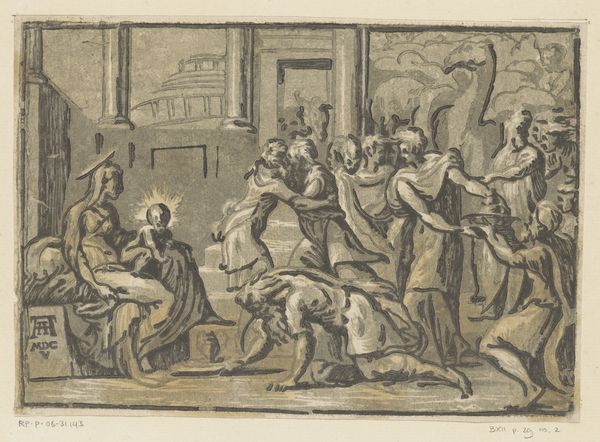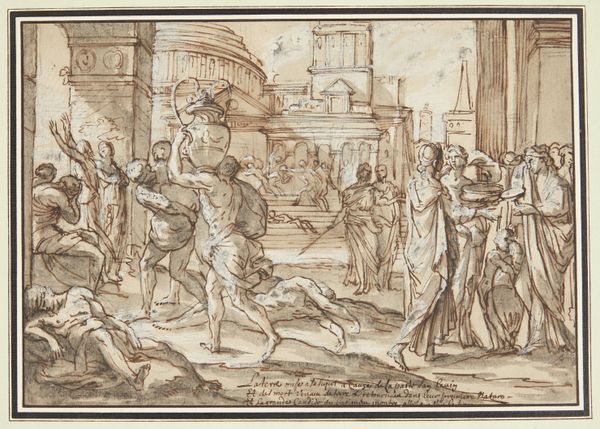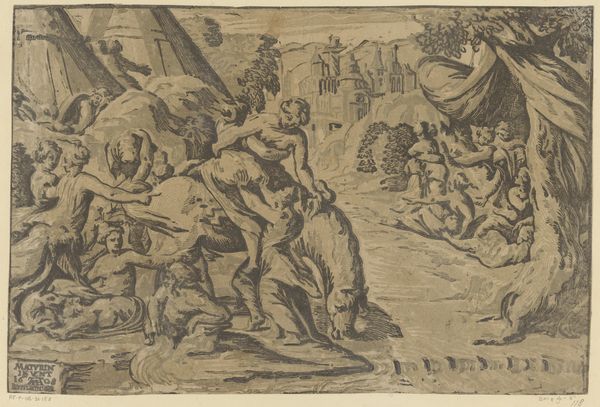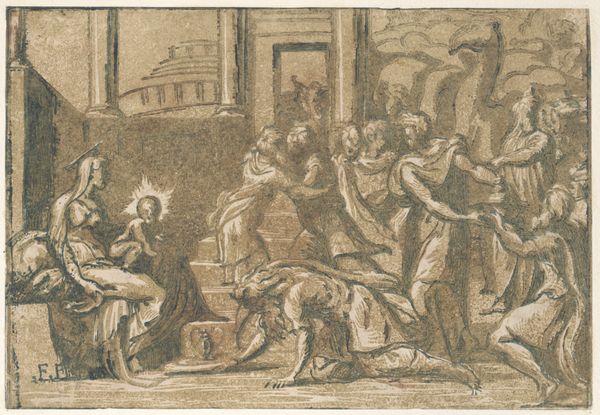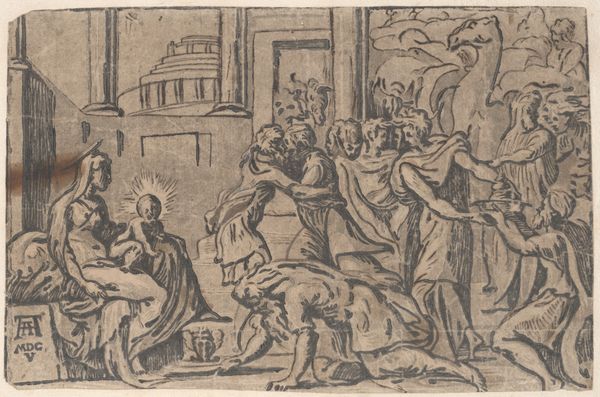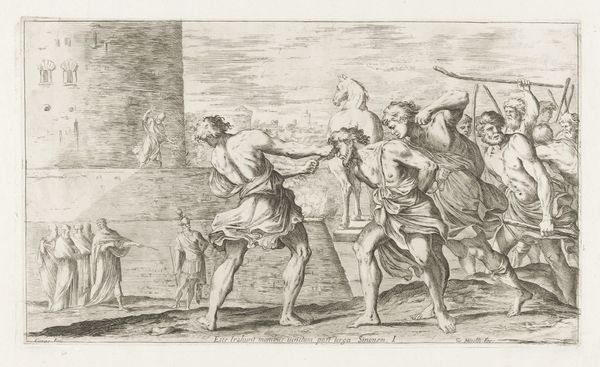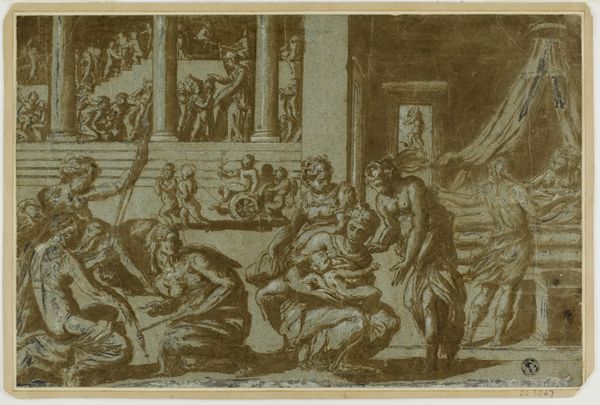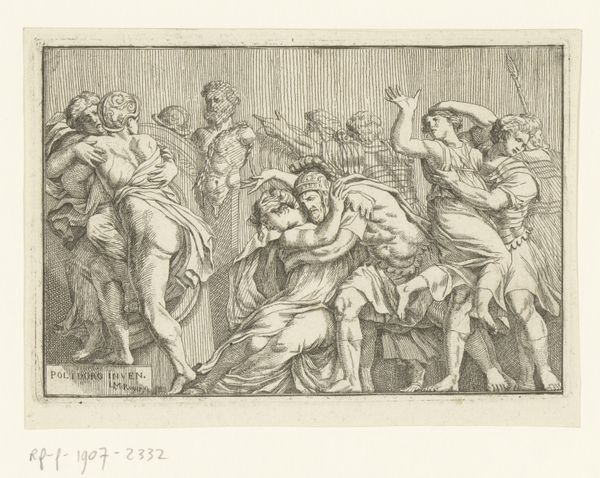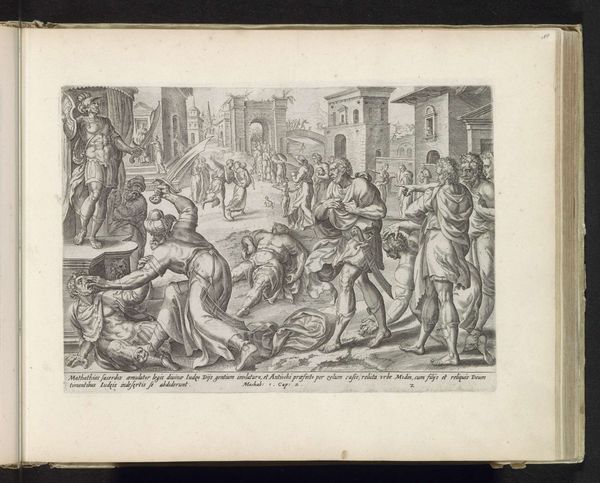
drawing, paper, ink
#
drawing
#
figuration
#
paper
#
11_renaissance
#
ink
#
history-painting
#
italian-renaissance
Dimensions: height 163 mm, width 239 mm
Copyright: Rijks Museum: Open Domain
Curator: Welcome. We're looking at a drawing attributed to Niccolò Vicentino, dating back to 1605. The piece, executed in ink on paper, depicts the Adoration of the Magi. Editor: It's immediately striking how he organizes the figures in a fairly shallow picture plane. All of them seem crammed together in an attempt to create a heightened sense of drama, but there’s actually a distancing effect to the lack of true depth. Curator: Yes, and note the architecture behind the scene. On the left, a classical structure and to the right, hints of landscape. This positioning is interesting, almost like showing a progression from order to nature’s bounty through symbolic motifs, setting the stage for the coming Christ. Editor: The composition leads my eye more than the subject itself; I can’t help but notice how much darker he makes the figures in the background as opposed to foreground figures such as the kneeling king. It gives them less individual presence while simultaneously crowding them. The technique itself creates a feeling that is not altogether holy. Curator: Interesting. Perhaps this reflects the relative positions of the viewer, the present worshipper, versus the somewhat faceless masses who came before. Consider, too, the figure of the Christ child, depicted with a burst of light. The artist reminds us about redemption arriving and what is to come for both past and future. Editor: But notice that the Virgin’s pose, especially her draping, repeats that of figures on the right of the scene in shadow, the “masses.” Is it really light radiating from Christ or just contrasting ink wash techniques which throw us off balance and perhaps show humanity’s interconnectedness and mortality? The work really is visually arresting, and quite unsettling. Curator: I agree. It's an interesting question, given how the repetition of forms across this work creates that unsettling effect you point out. Whether to interpret those formal relationships as intentional expressions of theological concepts… well, that’s part of art’s eternal mystery. Editor: Exactly. This drawing becomes a complex visual riddle the longer one observes.
Comments
No comments
Be the first to comment and join the conversation on the ultimate creative platform.
